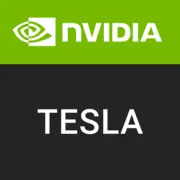NVIDIA Tesla S2050

The NVIDIA Tesla S2050 GPU is a powerhouse of a professional platform, designed to handle the most demanding computational tasks with ease. With 3GB of GDDR5 memory and a memory clock of 773MHz, this GPU delivers lightning-fast performance and seamless multitasking capabilities.
One of the most impressive features of the Tesla S2050 is its 448 shading units, which allow for incredibly smooth and detailed graphics rendering. Additionally, the 768KB L2 cache ensures that data can be accessed and processed quickly, further enhancing the overall speed and efficiency of the GPU.
With a TDP of 900W, the Tesla S2050 is a high-powered solution that is capable of tackling even the most intensive workloads. Its theoretical performance of 1.028 TFLOPS further illustrates the GPU's ability to handle complex calculations and simulations with ease, making it an ideal choice for professionals working in fields such as scientific research, engineering, and data analysis.
Overall, the NVIDIA Tesla S2050 GPU is a top-of-the-line solution for professionals in need of uncompromising performance and reliability. Its impressive specifications and cutting-edge technology make it a standout choice for those looking to take their computational tasks to new heights. Whether used for data analysis, machine learning, or high-performance computing, the Tesla S2050 delivers the power and efficiency needed to meet the demands of today's most advanced workflows.
Basic
Label Name
NVIDIA
Platform
Professional
Launch Date
July 2011
Model Name
Tesla S2050
Generation
Tesla
Bus Interface
PCIe 2.0 x16
Transistors
3,100 million
TMUs
?
Texture Mapping Units (TMUs) serve as components of the GPU, which are capable of rotating, scaling, and distorting binary images, and then placing them as textures onto any plane of a given 3D model. This process is called texture mapping.
56
Foundry
TSMC
Process Size
40 nm
Architecture
Fermi
Memory Specifications
Memory Size
3GB
Memory Type
GDDR5
Memory Bus
?
The memory bus width refers to the number of bits of data that the video memory can transfer within a single clock cycle. The larger the bus width, the greater the amount of data that can be transmitted instantaneously, making it one of the crucial parameters of video memory. The memory bandwidth is calculated as: Memory Bandwidth = Memory Frequency x Memory Bus Width / 8. Therefore, when the memory frequencies are similar, the memory bus width will determine the size of the memory bandwidth.
384bit
Memory Clock
773MHz
Bandwidth
?
Memory bandwidth refers to the data transfer rate between the graphics chip and the video memory. It is measured in bytes per second, and the formula to calculate it is: memory bandwidth = working frequency × memory bus width / 8 bits.
148.4 GB/s
Theoretical Performance
Pixel Rate
?
Pixel fill rate refers to the number of pixels a graphics processing unit (GPU) can render per second, measured in MPixels/s (million pixels per second) or GPixels/s (billion pixels per second). It is the most commonly used metric to evaluate the pixel processing performance of a graphics card.
16.07 GPixel/s
Texture Rate
?
Texture fill rate refers to the number of texture map elements (texels) that a GPU can map to pixels in a single second.
32.14 GTexel/s
FP64 (double)
?
An important metric for measuring GPU performance is floating-point computing capability. Double-precision floating-point numbers (64-bit) are required for scientific computing that demands a wide numeric range and high accuracy, while single-precision floating-point numbers (32-bit) are used for common multimedia and graphics processing tasks. Half-precision floating-point numbers (16-bit) are used for applications like machine learning, where lower precision is acceptable.
513.9 GFLOPS
FP32 (float)
?
An important metric for measuring GPU performance is floating-point computing capability. Single-precision floating-point numbers (32-bit) are used for common multimedia and graphics processing tasks, while double-precision floating-point numbers (64-bit) are required for scientific computing that demands a wide numeric range and high accuracy. Half-precision floating-point numbers (16-bit) are used for applications like machine learning, where lower precision is acceptable.
1.049
TFLOPS
Miscellaneous
SM Count
?
Multiple Streaming Processors (SPs), along with other resources, form a Streaming Multiprocessor (SM), which is also referred to as a GPU's major core. These additional resources include components such as warp schedulers, registers, and shared memory. The SM can be considered the heart of the GPU, similar to a CPU core, with registers and shared memory being scarce resources within the SM.
14
Shading Units
?
The most fundamental processing unit is the Streaming Processor (SP), where specific instructions and tasks are executed. GPUs perform parallel computing, which means multiple SPs work simultaneously to process tasks.
448
L1 Cache
64 KB (per SM)
L2 Cache
768KB
TDP
900W
Vulkan Version
?
Vulkan is a cross-platform graphics and compute API by Khronos Group, offering high performance and low CPU overhead. It lets developers control the GPU directly, reduces rendering overhead, and supports multi-threading and multi-core processors.
N/A
OpenCL Version
1.1
OpenGL
4.6
DirectX
12 (11_0)
CUDA
2.0
Shader Model
5.1
ROPs
?
The Raster Operations Pipeline (ROPs) is primarily responsible for handling lighting and reflection calculations in games, as well as managing effects like anti-aliasing (AA), high resolution, smoke, and fire. The more demanding the anti-aliasing and lighting effects in a game, the higher the performance requirements for the ROPs; otherwise, it may result in a sharp drop in frame rate.
48
Suggested PSU
1300W
Benchmarks
FP32 (float)
Score
1.049
TFLOPS
Compared to Other GPU
FP32 (float)
/ TFLOPS
Share in social media
Or Link To Us
<a href="https://cputronic.com/en/gpu/nvidia-tesla-s2050" target="_blank">NVIDIA Tesla S2050</a>